Project details
Skill
Cost
Estimated Time
In this how-to guide, we’ll walk you through a hardwood floor refinishing process that’s easier and less expensive than sanding down to bare wood—and that takes less time.
Refinishing a hardwood floor requires using a buffer, which you can rent at a home center, a water-based polyurethane, and a vacuum to suck up dust. Buffing hardwood floors can be tricky, so if you’ve never used a buffer before, practice in the middle of the room until you get a feel for how to maneuver it. In our guide, we’ll explain how to refinish hardwood floors without sanding and answer common questions we’ve come across.
How Much Does It Cost to Sand and Refinish Hardwood Floors Yourself?
Refinishing hardwood floors yourself costs between $500 and $1,000, whereas hiring a professional will cost anywhere from $1,100 and $2,663. The total cost includes renting sanding equipment along with purchasing sanding pads, wood stain, brushes, and finish. How much you pay depends on the square footage of the area you’re refinishing, the type of flooring, finishing method, and the specific materials.
*Cost data in this section is from Angi.
Is It Cheaper to Refinish or Replace Hardwood Floors?
In most cases, refinishing is cheaper than replacing hardwood floors. With the latter, you’d be paying not only for the new wood but also for the labor of ripping out the old wood and toting it away. Installing a new hardwood floor costs between $2,475 and $7,031, or $6 to $25 per square foot for the flooring and $3 to $6 for installation, but this doesn’t include the cost of removing the old flooring.
*Cost data sourced from Angi.
What To Consider Before Refinishing Hardwood Floors
There are some things to consider before you refinish your hardwood floors. If there’s damage to the wood, such as dents and scratches, visible wear, cupping, crowning, or discoloration, you may need to sand the floor down before you can restore the finish. If you apply the finish over dents and scratches, they could become more noticeable.
Sometimes, the tannins from your wood floor may react to water-based polyurethane, causing discoloration. To avoid this, apply a base coat before applying the water-based poly. Smooth the base coat out evenly around the edges with a paint brush. Don’t brush too fast, or you may create bubbles, which will show in the finish. Smooth out the rest of the floor with a synthetic floor finish applicator and give your base coat about two hours to dry.
Recommended Tools
 Microfiber flat mop
Microfiber flat mop Floor buffer fitted with maroon buffing pad
Floor buffer fitted with maroon buffing pad Vacuum fitted with clean filter
Vacuum fitted with clean filter Respirator fitted with organic vapor canisters
Respirator fitted with organic vapor canisters Plastic watering can (no sprinkler head)
Plastic watering can (no sprinkler head) Paint brush, 3-inch
Paint brush, 3-inch Paint roller with extension
Paint roller with extension
What Are the Steps To Refinishing Hardwood Floors?
Follow these steps for refinishing the wood floors in your home.
1. Clean the Floor With a Hardwood Floor Cleaner
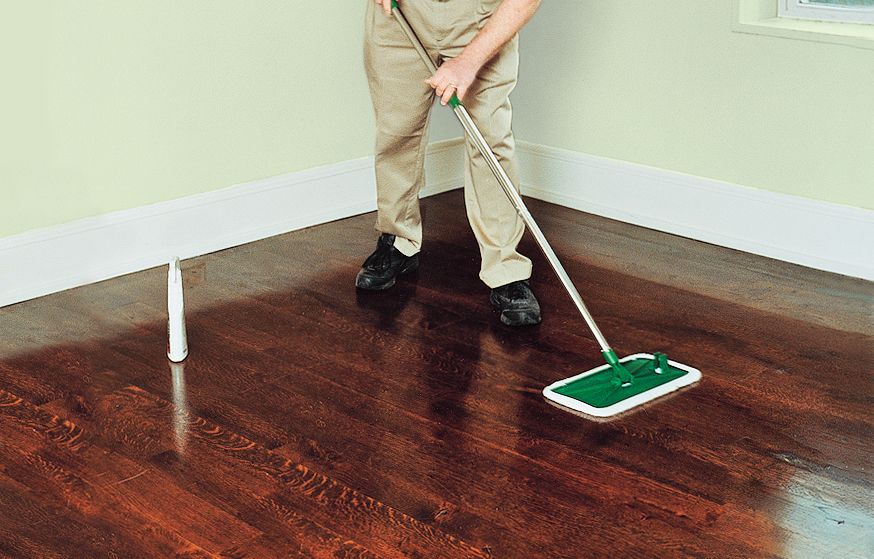
- Remove all the furniture, and spray the floor with a hardwood flooring cleaner or your own mix of 10 parts water to one part white vinegar.
- Gently wipe the floor with a terry-cloth mop or a towel wrapped around a mop head.
- Close the windows and doors to keep dust contained in the room you’re sanding.
2. Prep the Perimeter
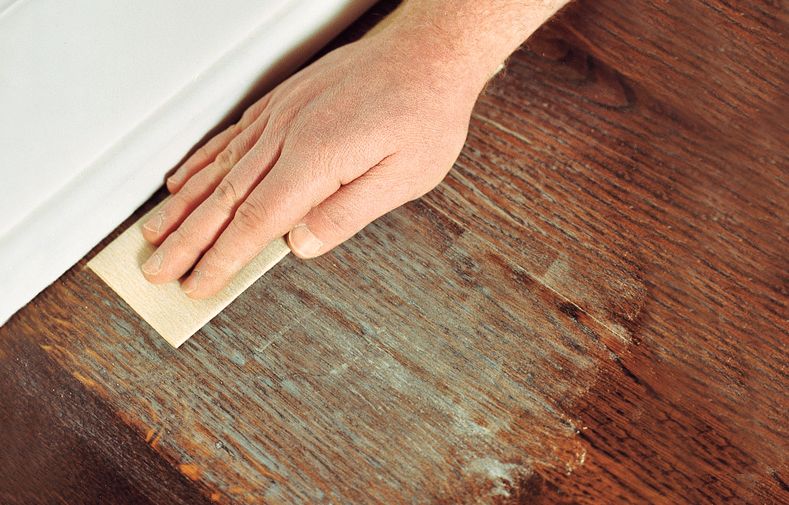
- Using 180-grit sandpaper, hand-sand the perimeter of the room and any nooks that the buffer can’t reach.
- Rub with the grain 4 to 6 inches out from the baseboard, working over each board until the finish dulls and a powder forms.
Pro tip: Don’t use a sanding block for refinishing hardwood—it might miss uneven spots in the floor.
3. Scuff-Sand the Floor Finishing
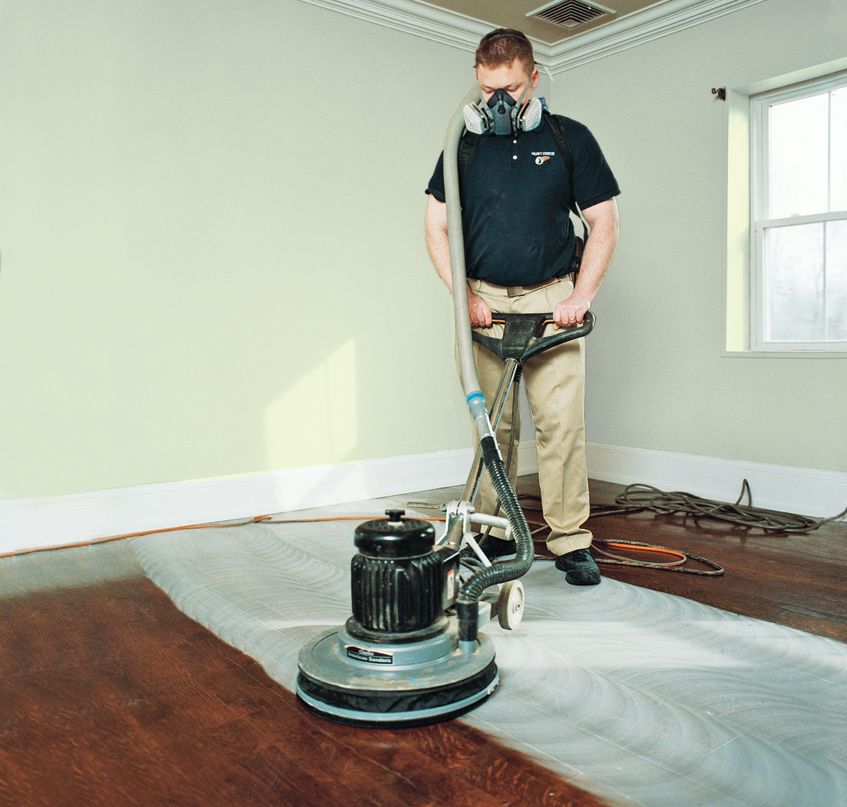
- Stick a maroon buffing pad to the buffer and put on a dust mask.
- Move the buffer from side to side across the floor in the direction of the grain, overlapping each course by 6 inches.
- The old finish turns to powder as you go, so it’s easy to see the areas you’ve covered.
- Keep the buffer moving at all times, but stop every five minutes or so and vacuum the pad.
4. Vacuum and Tack
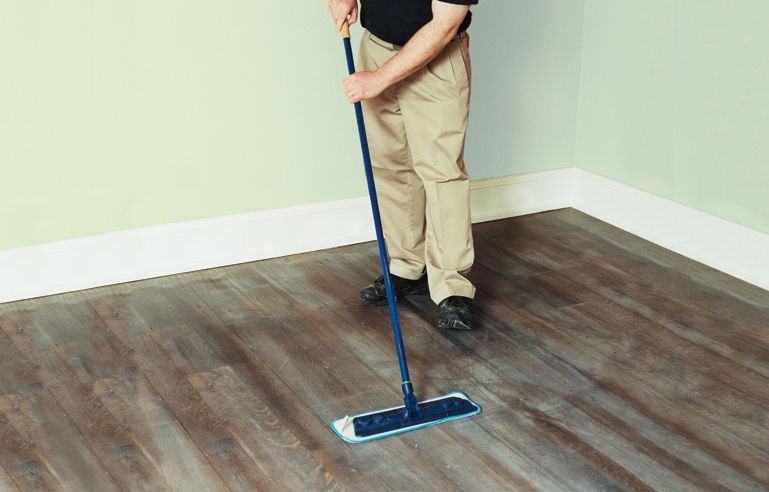
- Leave the room for 10 to 15 minutes to let the powder settle.
- Put a clean filter in the vacuum, and sweep the floor using a felt-bottomed attachment.
- Work in line with the flooring strips, then sweep across them to get any powder that settled between the boards.
- Finally, dry-tack the floor with a microfiber cloth pushed with the grain.
5. Cut in Along the Edges
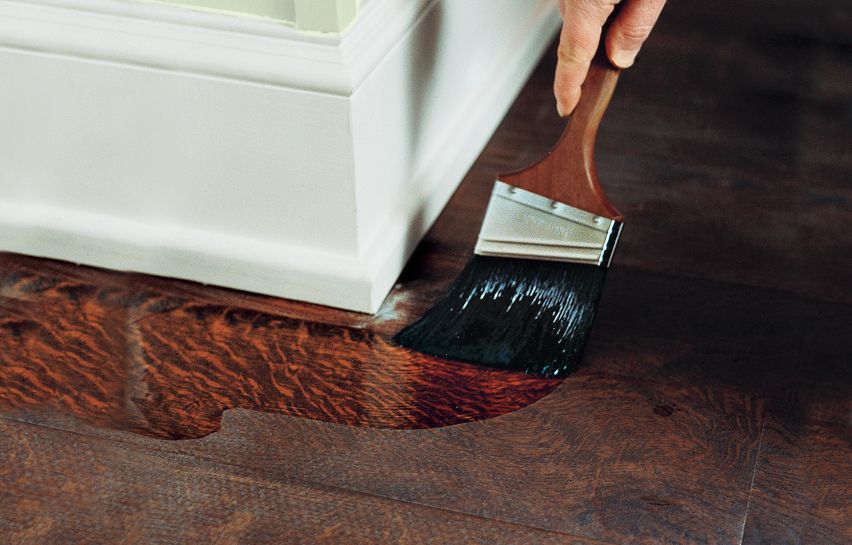
- Cover your shoes with booties and your nose and mouth with a respirator that has organic vapor canisters.
- Strain the finish through a cone filter into a clean plastic watering can, minus a sprinkler head, then pour some strained finish into a small plastic container.
- Brush a 3-inch-wide stripe beside the baseboards at a point farthest from your exit door.
- You’ll have lap marks if the edge of the stripe starts to dry, so stop after 10 minutes and go to the next step.
6. Roll Out the Rest of the Finish
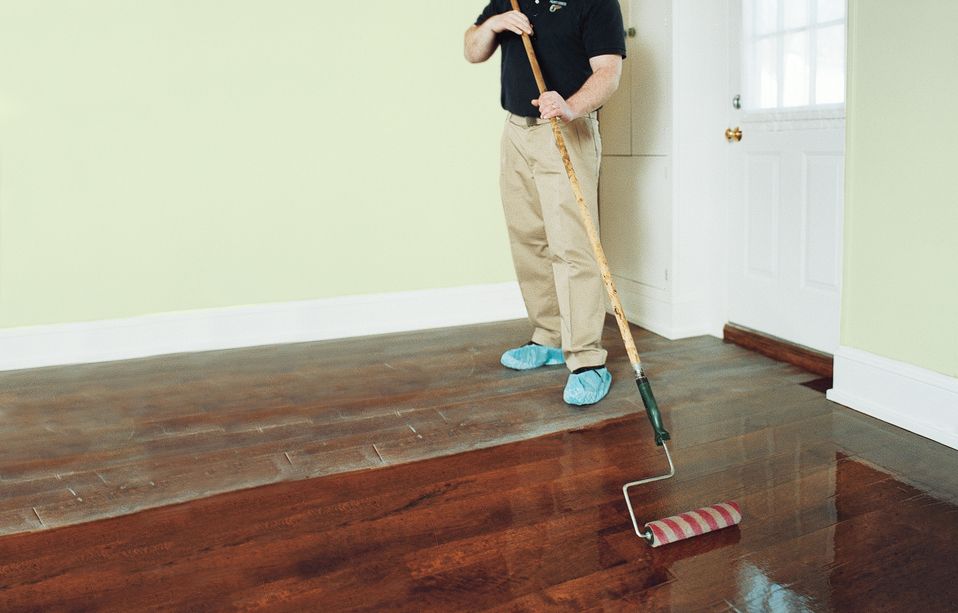
- Pour out a 1-inch-wide stripe of finish in line with the grain—only as much as you can spread in 10 minutes.
- Using a long-handled roller with a 1/4-inch nap cover, roll out the finish with the grain, then across it.
- Overlap each pass and work quickly to keep a wet edge.
- After 10 minutes, brush more finish along the edge, then pour and roll again for 10 minutes. Continue until the floor is covered.
- Wait three hours before recoating and a week before putting back furniture.
Our Conclusion
Refinishing hardwood floors is a relatively affordable project that many homeowners can finish within a day. Most projects will cost between $500 and $1,000 to DIY, but prepare to pay closer to the higher end for larger areas. If there’s visible damage to the wood, we recommend completely sanding it down before refinishing.
Looking for help with repairs around your home? A home warranty may help. Check out these in-depth guides from the This Old House Reviews Team:







